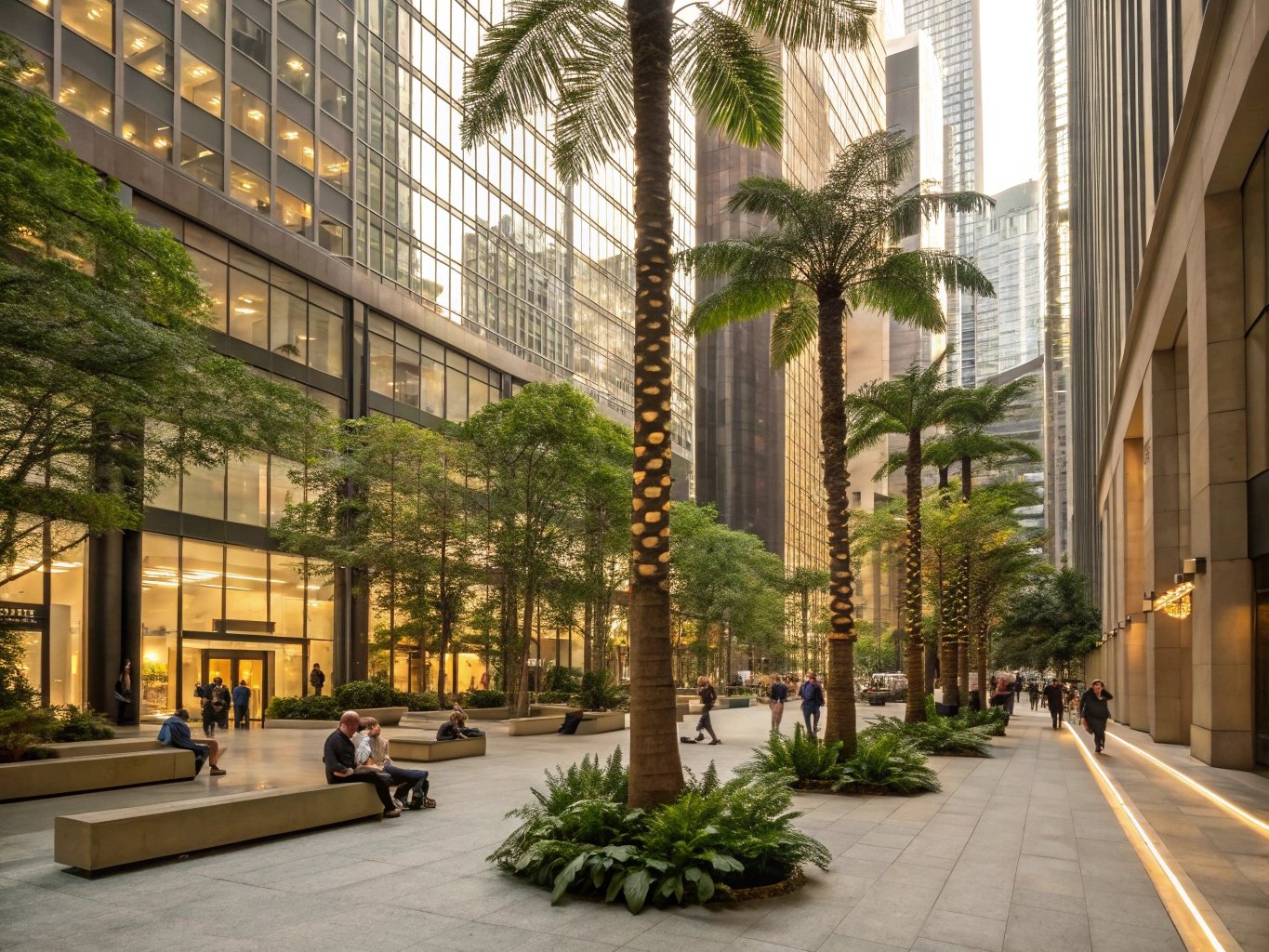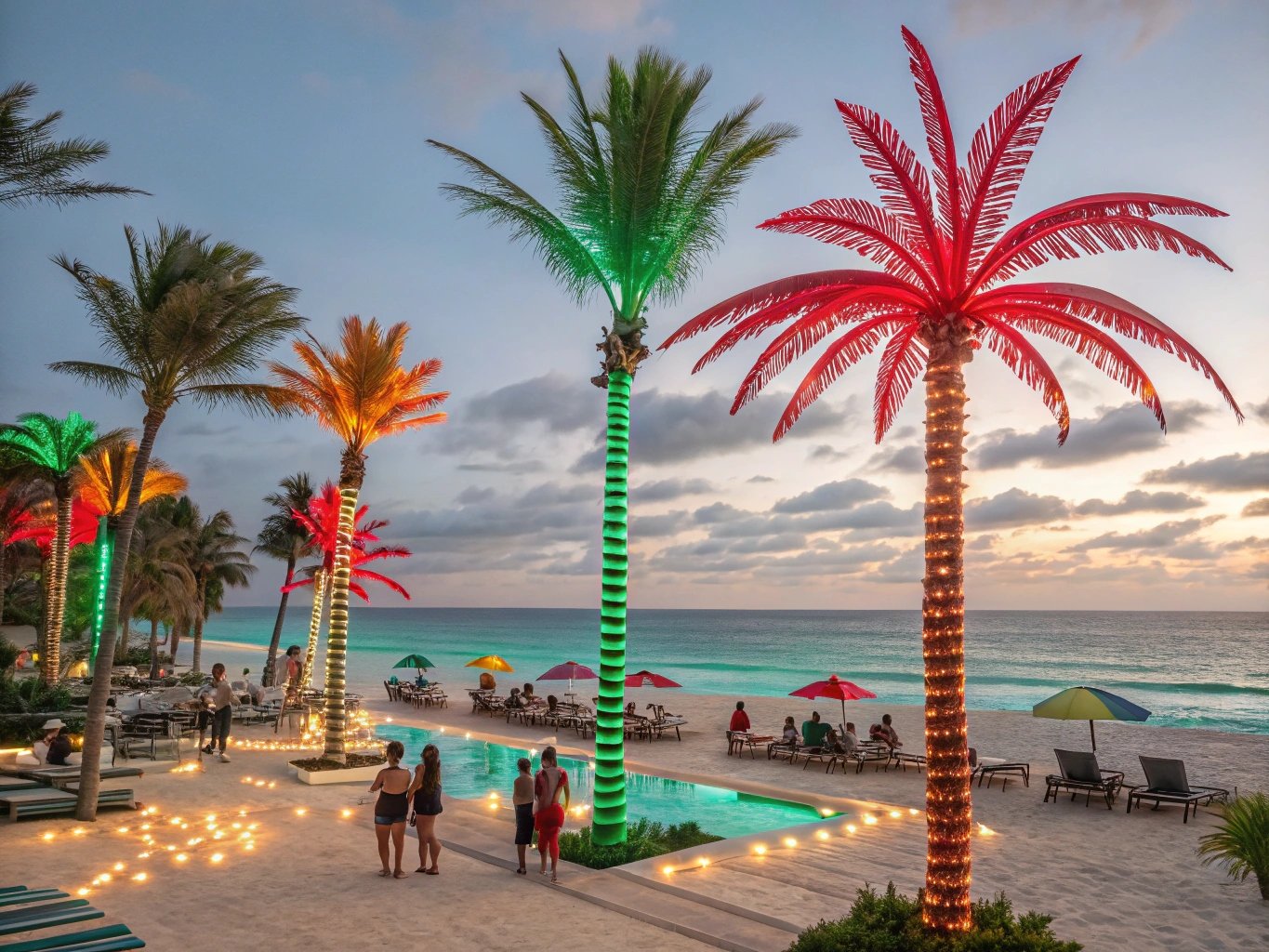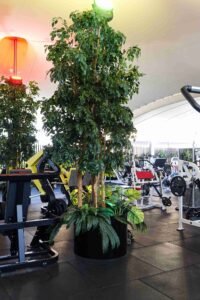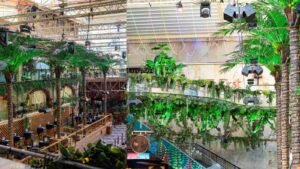Cities lack green spaces, but traditional landscaping costs too much and needs constant upkeep. How can you easily recreate South America’s stunning biodiversity without hefty maintenance fees?
Artificial trees realistically recreate South America’s lush biodiversity, offering urban areas a sustainable, cost-effective way to capture the continent’s vibrant landscapes with minimal maintenance.

Let's explore exactly how artificial trees can capture the heart and spirit of South America’s unique natural and cultural landscapes, bringing vivid, sustainable beauty to modern spaces.
How Can Artificial Trees Recreate the Biodiversity of the Amazon Rainforest in Urban Spaces?
Urban developments struggle to integrate natural greenery, but real tropical plants are costly and difficult to maintain. Could artificial Amazon trees solve this urban greening problem?
Artificial trees replicate the dense, vibrant greenery of the Amazon with precision-made foliage, realistic textures, and diverse plant species, easily bringing rainforest biodiversity into urban environments without intensive maintenance.

Diving Deeper: Why Artificial Trees Suit Amazon-Inspired Urban Designs
Creating a realistic Amazon environment means capturing the sheer variety of plants. Real trees from the Amazon rarely survive well in urban climates due to differences in humidity, light, and care requirements. Artificial trees overcome these issues by exactly imitating the appearance and texture of tropical species like rubber trees, palms, and exotic ferns. Made from UV-resistant and weatherproof materials, these artificial trees withstand harsh urban conditions.
Here's how different artificial tree species help replicate authentic Amazon biodiversity:
| Artificial Tree Species | Key Features | Ideal Urban Usage |
|---|---|---|
| Faux Rubber Tree | Broad leaves, dense foliage | Office buildings, shopping malls |
| Artificial Palms | Tall, elegant, realistic trunks | Hotel lobbies, atriums, public parks |
| Synthetic Ferns | Layered, lush, realistic fronds | Indoor gardens, cafes, restaurant decor |
I personally witnessed how artificial trees transformed an ordinary Dubai lobby into a mini Amazon rainforest, drawing visitors who loved the realistic setting without the problems of live plant maintenance. Detailed designs and quality artificial foliage make it simple to recreate the Amazon’s lush environment in any urban location.
What Makes the Andean Highland Flora Perfect for Sustainable Rooftop Gardens in Lima or Bogotá?
Rooftop gardens in South America face severe climate challenges, from harsh sunlight to unpredictable rainfall. How can you ensure greenery stays vibrant and appealing?
Artificial Andean flora, specifically adapted to mimic hardy mountain plants, provides perfect low-maintenance solutions for rooftop gardens in cities like Lima and Bogotá, easily handling challenging climates.

Diving Deeper: Advantages of Using Artificial Andean Highland Flora
Highland plants native to the Andes naturally survive tough climates, but urban rooftop gardens often struggle to keep these plants alive. Artificial flora inspired by Andean plants addresses these problems directly. These synthetic plants replicate hardy species like Polylepis trees and cushion plants with exact detail. Made from weather-resistant materials, they thrive under strong sun, rain, and wind without fading or damage.
Here’s a quick comparison table showcasing why artificial plants outperform real plants for rooftop gardens:
| Comparison Point | Real Andean Plants | Artificial Andean Plants |
|---|---|---|
| Maintenance Needs | High watering and care | Zero maintenance |
| Weather Resilience | Moderate, climate-sensitive | Excellent, withstands UV, wind |
| Longevity | Short lifespan in cities | Lasts decades with minimal care |
When working on rooftop garden projects in Lima, I noticed real Andean plants required frequent replacements. Switching to artificial flora instantly solved this problem, ensuring sustainable beauty and reducing costs for my clients.
Rio’s Carnival Vibes: Can Artificial Trees Transform Beachfront Resorts into Tropical Paradises?
Beach resorts want vibrant, tropical atmospheres, but constant exposure to saltwater and sun makes live plants impractical. Can artificial trees deliver a lasting carnival feel?
Artificial tropical trees effectively recreate Rio’s lively carnival atmosphere, offering beachfront resorts resilient, colorful landscaping solutions that endure harsh coastal environments without fading or deteriorating.

Diving Deeper: How Artificial Trees Sustain a Festive Rio Atmosphere
Beachfront resorts face unique landscaping challenges. Real tropical plants quickly fade or wilt from constant exposure to sun, wind, and salty air. Artificial trees solve these problems by maintaining vibrant appearances without special care. Palm trees, hibiscus bushes, and faux banana trees keep resorts feeling fresh and festive all year round.
Consider these practical advantages of artificial tropical landscaping:
| Feature | Real Tropical Plants | Artificial Tropical Trees |
|---|---|---|
| Salt Resistance | Poor, rapid deterioration | Excellent, no damage |
| Sun Exposure | High sensitivity | UV-resistant, no fading |
| Visual Impact | Seasonal fluctuations | Consistent year-round appeal |
For instance, a hotel in Rio previously struggled to maintain palm-lined landscapes near the beach. After switching to high-quality artificial palms, the site became lively and vibrant permanently, increasing guest satisfaction and significantly reducing upkeep costs.
From Incan Ruins to Modern Cities: How to Blend Artificial Trees with South America’s Cultural Heritage?
Modern cities desire to honor South America’s rich cultural history, but how can they do this visually without sacrificing practicality?
Artificial trees integrate seamlessly with architectural designs, creatively referencing Incan motifs and traditional landscapes, merging South America’s historic aesthetics into contemporary urban environments sustainably and attractively.

Diving Deeper: Incorporating Cultural Themes Using Artificial Trees
Blending cultural heritage into modern urban landscapes often means using symbols or patterns from history. Artificial trees, crafted to mimic traditional and historic species, visually connect new architecture with old traditions. Artificial Araucaria and artificial Incan fruit trees are excellent examples that recall traditional Andean landscapes and agricultural practices.
Here’s how cities can achieve this cultural blending effectively:
| Strategy | Description | Example Application |
|---|---|---|
| Historic Tree Replicas | Trees significant to Incan culture | City parks, plazas |
| Traditional Patterns | Incorporating ancient motifs into landscaping | Urban walkways, historical districts |
| Symbolic Landscaping | Cultural storytelling through plant choices | Museums, cultural centers |
I have seen plazas in Cusco transformed into spaces that beautifully highlight cultural identity through the use of artificial Araucaria trees, effectively connecting past and present landscapes.
Why Are Faux Ceibo Trees the Secret to Eco-Friendly Commercial Spaces in Buenos Aires?
Businesses want eco-friendly decorations, but live trees are costly and difficult to maintain indoors. Are faux Ceibo trees the practical solution for Buenos Aires?
Faux Ceibo trees offer Buenos Aires businesses an eco-friendly, durable, and visually appealing alternative, perfectly replicating Argentina’s national tree without environmental impact or demanding upkeep.

Diving Deeper: Eco-Friendly Benefits of Faux Ceibo Trees
Ceibo trees symbolize Argentina’s national pride but rarely thrive indoors due to maintenance challenges. Artificial Ceibo trees realistically mimic their natural beauty while eliminating the environmental impact of regular watering, fertilizers, and replacements required by live trees.
Here’s how faux Ceibo trees support sustainability goals:
| Eco-Friendly Feature | Real Ceibo Trees | Faux Ceibo Trees |
|---|---|---|
| Maintenance Requirements | High watering, trimming | None |
| Environmental Impact | Soil, fertilizer use | Zero chemical impact |
| Longevity and Durability | Short indoor lifespan | Long-lasting, durable indoors |
A hotel I recently advised in Buenos Aires switched to faux Ceibo trees, significantly reducing its ecological footprint and costs while enhancing the appearance of their interior spaces.
Conclusion
Artificial trees uniquely capture South America’s diverse landscapes, sustainably blending natural beauty with urban practicality across various cities and climates, benefiting businesses and communities alike.







